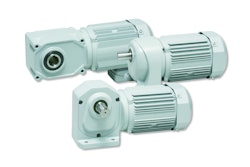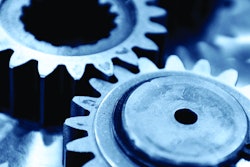Risk assessment is a process that allows you to protect something of value. Food and beverage processors and machinery builders alike want to protect machine operators and other plant employees and keep the production floor safe. At the same time, processors must adhere to food safety and quality standards as well as productivity goals. In this interview with PMMI’s machine safety expert Fred Hayes, ProFood World examines how to develop a proper a risk reduction protocol.
PFW: Why is risk assessment important?
Hayes: Risk assessment is required by safety standards. ANSI 155.1 2016 Safety Requirements for Packaging and Processing Machinery requires a risk assessment to determine if you have built the machine to an acceptable level of risk. Risk assessment is also a requirement of the European Machinery Directive to ship equipment into Europe. The machinery directive 2006/42/EC Annex I lists the steps of risk assessment. Obviously, in the U.S., there are some regulatory obligations for risk assessment, such as HACCP (hazard analysis critical control points) or FSMA (Food Safety Modernization Act).
PFW: Please explain the risk assessment process.
Hayes: Risk assessment tells users what to do. In other words, what is the hazard? What do I have to do to implement risk reduction measures for that hazard? A risk assessment may say there’s a hazard here, and we’re going to put a guard on it. There are other standards, such as ANSI B11-19 Performance Requirements for Risk Reduction Measures: Safeguarding and Other Means of Reducing Risk that tell you how to build the guard.
Risk assessment is a top-level standard. If we look at the steps in a risk assessment (see table 2 on page xx), it is an iterative process. It starts off with setting the limits of what the assessment is going to do. In other words, what kind of machine is it, but also is it the risk assessment of the whole machine or just part of a machine? You need to define the scope of the risk assessment.
The second step is an important one: Identify the task and hazard. If you don’t identify the hazards, you can’t analyze the risks. How do you do that? Well, obviously you look for mechanical hazards, such as run-in nip points [e.g., two rollers running together or a conveyor belt that goes around a pole] and energy sources.
An example of stored energy is an elevator on a palletizer. When that elevator’s up in the air, a certain amount of energy is stored, but if that elevator is released, it’s going to come down. That could be a hazard.
PFW: Please define task-based risk assessment and provide examples.
Hayes: This is where you look at what workers do and the hazards they’re exposed to. When someone is going to clear a jam, you don’t want the machine to move or restart. Another example is when someone is cleaning a machine in a dairy. Sometimes they have to clean the machine with the doors open and the machine moving. Third-shift workers who are tasked with cleaning may be exposed to hazardous chemicals used for cleaning. This is where task-based risk assessment will help you find more hazards.
Let’s use the example of cleaning the machine with a door guard open, and the machine has to be moving. There are ways to safely do that. The machine can be set to run slowly with the operator using a live-man switch to control it.
Once you have identified a hazard, you need to evaluate the risk with a scoring system. A risk matrix is a method used by many companies. (See table 1 on page xx.) This matrix is easy to understand and use. Look at where you think you are in the matrix, and then determine how to get to a better place and reduce the risk
PFW: How should food processors prioritize time and effort spent on risk assessment?
Hayes: Spend your money and efforts on reducing risk, not scoring it. It’s very easy for people to get hung up on risk scoring. We have found that you can have three teams score the risk associated with a hazard slightly differently, but they all pick the same risk reduction measures.
Once you have identified a hazard and you want to implementing risk reduction measures, the engineering hierarchy of controls section shown in Table 1 basically starts with engineering the hazard out. These are design changes where you eliminate the hazard or you substitute something else. Then you get into engineering controls, which are barriers, interlock devices, presence-sensing devices. Next are awareness devices, such as lights and beacons and warning signs. Finally, you have administrative controls, such as procedures and training.
Procedures and training are important, but they’re less effective than say, having a guard in a certain area. You put a guard on the machine and warning label with the guard. Plus, you include this in training employees. At this point, you should be at an acceptable risk.
When you’re reducing risk, usually you’re reducing the probability of the harm, not the severity. For example, on a palletizing machine, there are things inside the guards, such as moving chains and belts, etc. The barrier guard prevents contact with the hazards, but doesn’t reduce severity of an injury if you come in contact with the hazard. The guard reduces the probability of becoming entangled.
Depending on how simple or complex the machine is, you may come up with more than 100 task hazard pairs or line items on the risk assessment for a packaging machine. Some machines could be less. Some could be a lot more.
The risk assessment process works if you follow it. The most important things are to identify the hazards; focus on reducing risk, not scoring it; and determining what is acceptable risk so you have an endpoint.
PFW: How can food and beverage processors and OEMs collaborate to reduce risk?
Hayes: There are times when the machinery builder and purchaser of the machine have different definitions of what is acceptable risk or how you get there. For example, a food company may want a certain type of control system or certain types of interlocks. Instead of a guard and interlock switch, the customer wants a light curtain. An interlock switch works well with a guard, but this processor wants a light curtain for a particular reason. That’s OK, but it’s probably going to be an upcharge because that isn’t the standard for the OEM.
It’s important that the machinery builder specify the architecture or performance level for the safety system and that it only applies to the “safety-related parts of the control system.” An example of why this is important: A machine tool that has a spindle, a table and coolant system. If you open an interlocked guard and the spindle starts, the operator can be injured. On the other hand, if the coolant system fails while an operator is inside the guard, they may get wet! Does the coolant system really need to be category 3?
If a food or beverage company buys three pieces of packaging machinery, the integration may either be done by an integrator or by the plant. The machines may be from three different builders. Some additional guarding may be required at the machine interfaces, but no one knows what it should be because the line is not yet integrated. Hazards should be assessed as part of the integration process.























